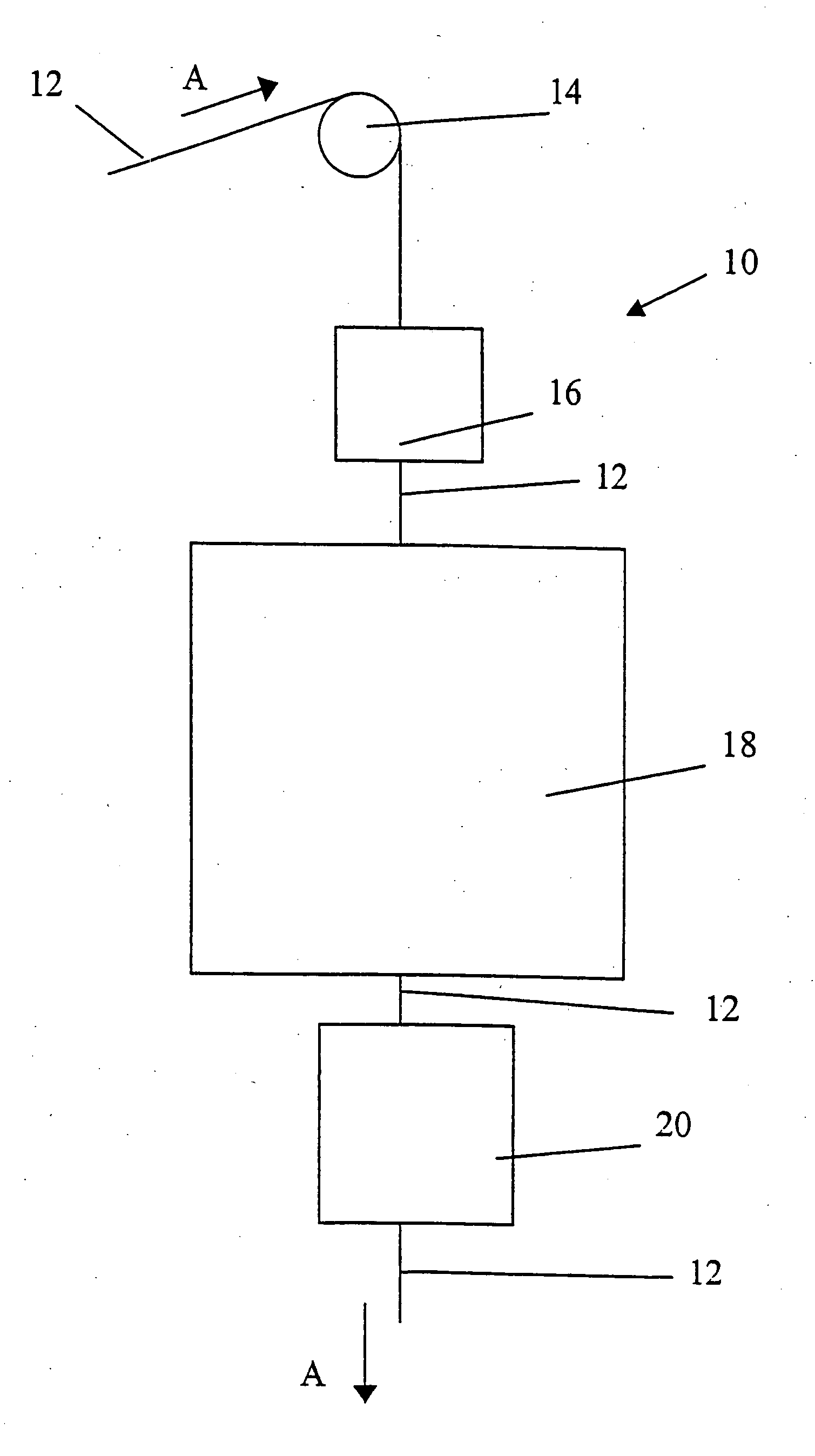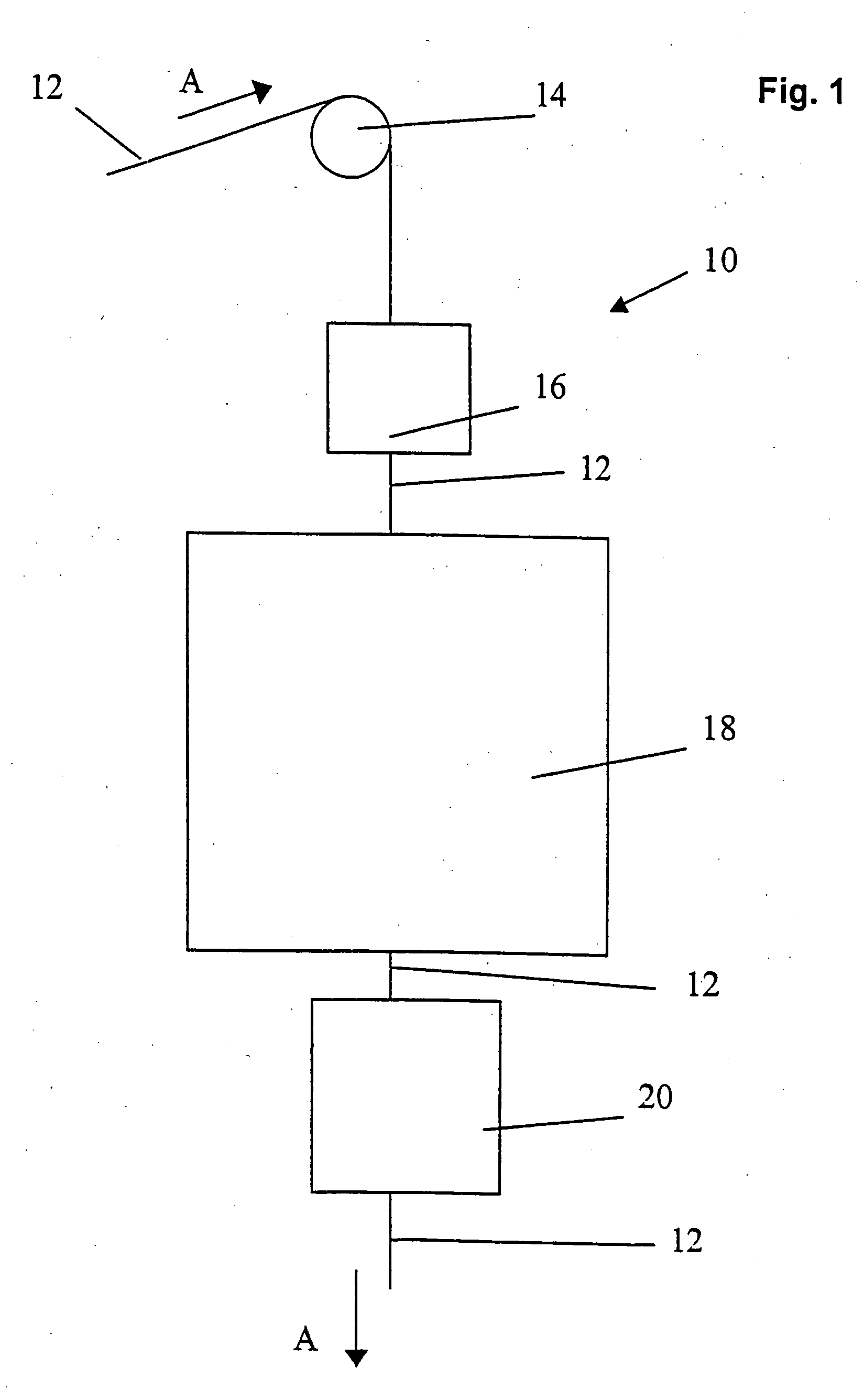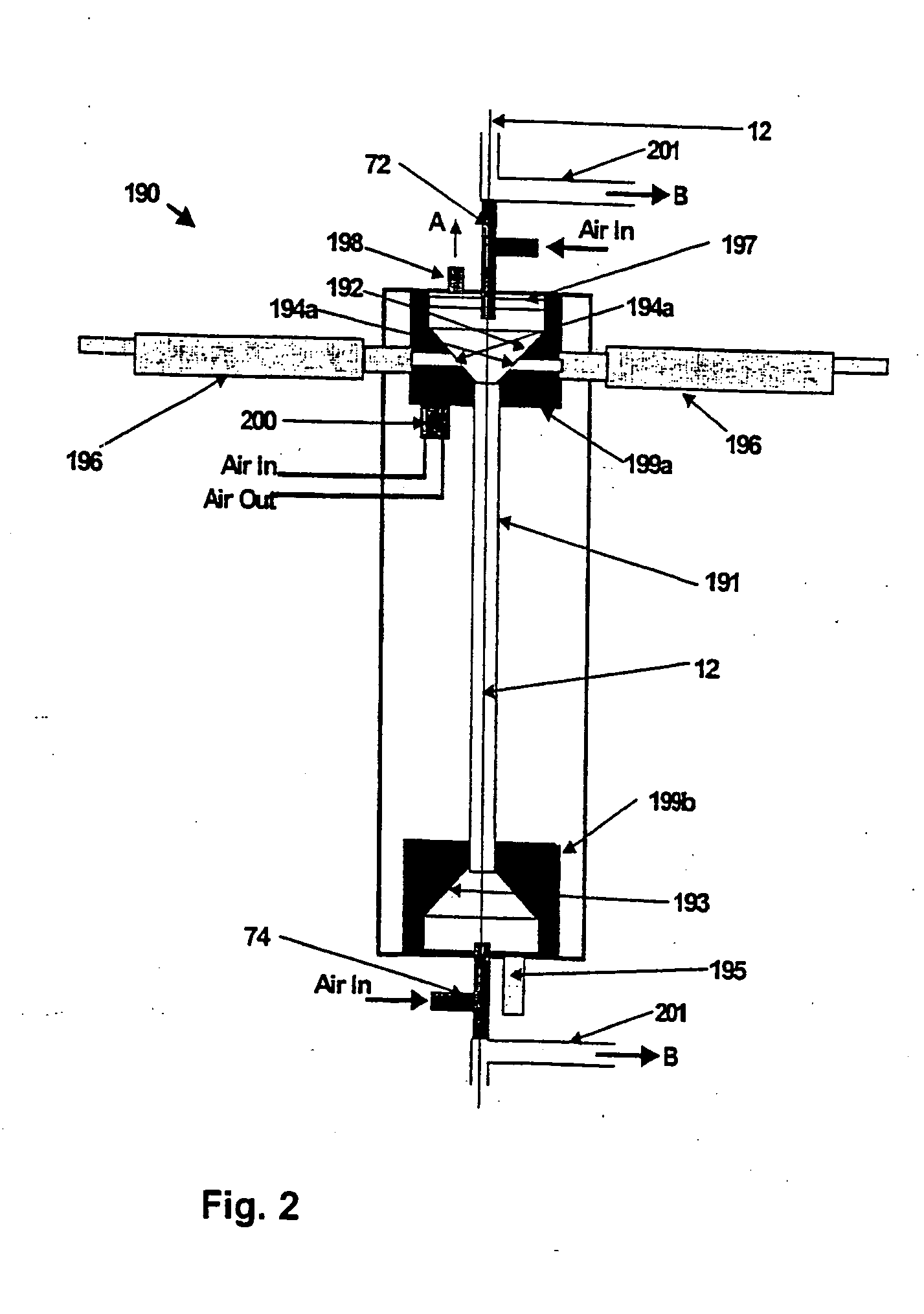Fibre coating method and apparatus
a technology of fibre coating and apparatus, applied in the direction of coating, chemical vapor deposition coating, fibre mechanical structure, etc., can solve the problems of difficult to effectively rebuild the apparatus without effectively adjusting the operating properties of the apparatus, the inlet and outlet of the fibre can become blocked, and the throughput speed of the fibre is limited
- Summary
- Abstract
- Description
- Claims
- Application Information
AI Technical Summary
Problems solved by technology
Method used
Image
Examples
first embodiment
[0027] the fibre coating unit 18 is shown in FIG. 2. The uncured resin coated fibre unit 12 passes through a coating chamber 190, which comprises a generally cylindrical glass tube 191 terminating at each end in a substantially solid block (199a and 199b) which each define a chamber having a frusto-conical surface (192 and 193). The fibre unit 12 also passes through positive pressure chamber 72 located adjacent the first end 192 and positive pressure chamber 74 located adjacent the second end 193.
[0028] A mixture of air and microspheres is admitted into the coating chamber via two ducts 196 passing through block 199a and apertures 194a located in the frusto-conical surface 192. Although in the embodiment there are only two ducts and apertures, it is understood that the air and microsphere mixture may be admitted using a plurality of ducts / apertures entering either through the walls of the block 199a or alternatively directly into the tube 191 (as shown later in FIG. 3). The air and ...
second embodiment
[0036] the fibre coating unit 18 is shown in FIGS. 5-7, and comprises positive pressure chamber 301, coating chamber 302 and positive pressure chamber 303. The uncured resin coated fibre unit 12 passes through these in the direction indicated by arrow 300. An air and microsphere mixture within coating chamber 302 causes multiple microspheres to adhere to the uncured resin coating of the fibre unit, which is then cured downstream as discussed earlier.
[0037] Coating chamber 302 comprises two substantially solid blocks 304 and 305, separated by a cylindrical glass tube 191, which together define a passage through which the fibre unit 12 passes. A mixture of air and microspheres is admitted into the coating chamber 302 (in the directions indicated by arrows 308 and 309) via two inlet ducts 306 and 307 formed within upper block 304. The two ducts 306 and 307 open into an annular cavity 314 within block 304. The cavity 314 is formed concentrically around the passage through which the fibr...
third embodiment
[0046] the fibre coating unit 18 is shown in FIGS. 8-10, and comprises positive pressure chamber 301, coating chamber 802 and positive pressure chamber 303. The uncured resin coated fibre unit 12 passes through these in the direction indicated by arrow 300. An air and microsphere mixture within coating chamber 802 causes multiple microspheres to adhere to the uncured resin coating of the fibre unit, which is then cured downstream as discussed earlier.
[0047] Coating chamber 802 comprises two substantially solid blocks 804 and 305, separated by a cylindrical glass tube 191, which together define a passage through which the fibre unit 12 passes. A mixture of air and microspheres is admitted into the coating chamber 802 (in the directions indicated by arrows 308 and 309) via two inlet ducts 806 and 807 formed within upper block 804. The two ducts 806 and 807 open into an annular cavity 814 within block 804 formed concentrically around the passage through which the fibre unit will pass. ...
PUM
| Property | Measurement | Unit |
|---|---|---|
| diameter | aaaaa | aaaaa |
| diameter | aaaaa | aaaaa |
| speeds | aaaaa | aaaaa |
Abstract
Description
Claims
Application Information
 Login to View More
Login to View More - R&D
- Intellectual Property
- Life Sciences
- Materials
- Tech Scout
- Unparalleled Data Quality
- Higher Quality Content
- 60% Fewer Hallucinations
Browse by: Latest US Patents, China's latest patents, Technical Efficacy Thesaurus, Application Domain, Technology Topic, Popular Technical Reports.
© 2025 PatSnap. All rights reserved.Legal|Privacy policy|Modern Slavery Act Transparency Statement|Sitemap|About US| Contact US: help@patsnap.com



